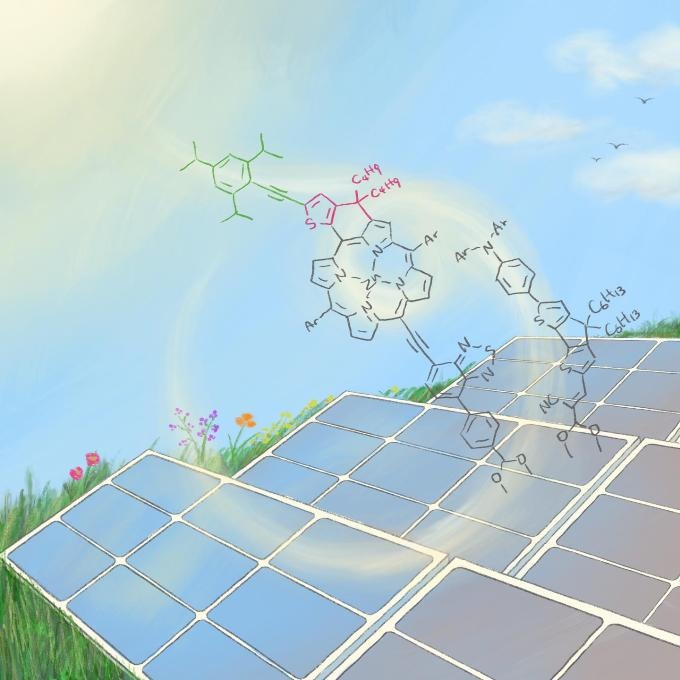Jun 13 2019
Scientists from the Institute for Integrated Cell-Material Sciences at Kyoto University have developed a well-known variety of dye-sensitized solar cell more effectively by modifying and updating its structure.
 A new molecular dye improves the efficiency of solar cells. (Image credit: Illustration by Izumi Mindy Takamiya)
A new molecular dye improves the efficiency of solar cells. (Image credit: Illustration by Izumi Mindy Takamiya)
The study, reported in the Journal of the American Chemical Society (JACS), describes a sequence of adaptations with a power conversion efficiency of 10.7%, which is the highest ever for this type of dye-sensitized solar cell, the most efficient solar technology available currently.
Existing dye-sensitized solar cells are composed of a porous layer of titanium dioxide coated with a molecular dye. Upon absorption of sunlight, electrons are excited as they traverse, and are gathered for power, prior to being “recycled,” reintroduced into the electrolyte, and back to the dye molecule. Since they are lightweight and have low density, they have a high industry demand as a substitution material for existing rooftop solar panels.
Various approaches are available to structuring these solar cells; aromatic ring fusion to a porphyrin core is the most appealing, since these solar cells absorb red light effectively. However, they have their own disadvantages: the electrons are only excited for a short period and have a propensity to accumulate, making the conversion to power complicated.
In order to enhance efficiency, Hiroshi Imahori, Tomohiro Higashino, and teammates explored the use of a methylene bridged material, combined with the porphyrin core. They thought this would solve the drawbacks, specifically by curbing the accumulation and improving energy conversion.
The new molecular dye, DfZnP-iPr, enabled them to obtain a higher efficiency than earlier. They hope that their study will strengthen the investigation of aromatic-fused porphyrin sensitizers for these high-performance solar cells.
Growing concern over the use of fossil fuels and environmental issues means we need to work hard on improving sustainable energy systems. Our work improves the efficiency of a lightweight and attractive solar technology and we hope will stimulate the research community to further explore the potential of aromatic-fused porphyrin sensitizers for high performance dye-sensitized solar cells.
Hiroshi Imahori, Institute for Integrated Cell-Material Sciences (iCeMS), Kyoto University